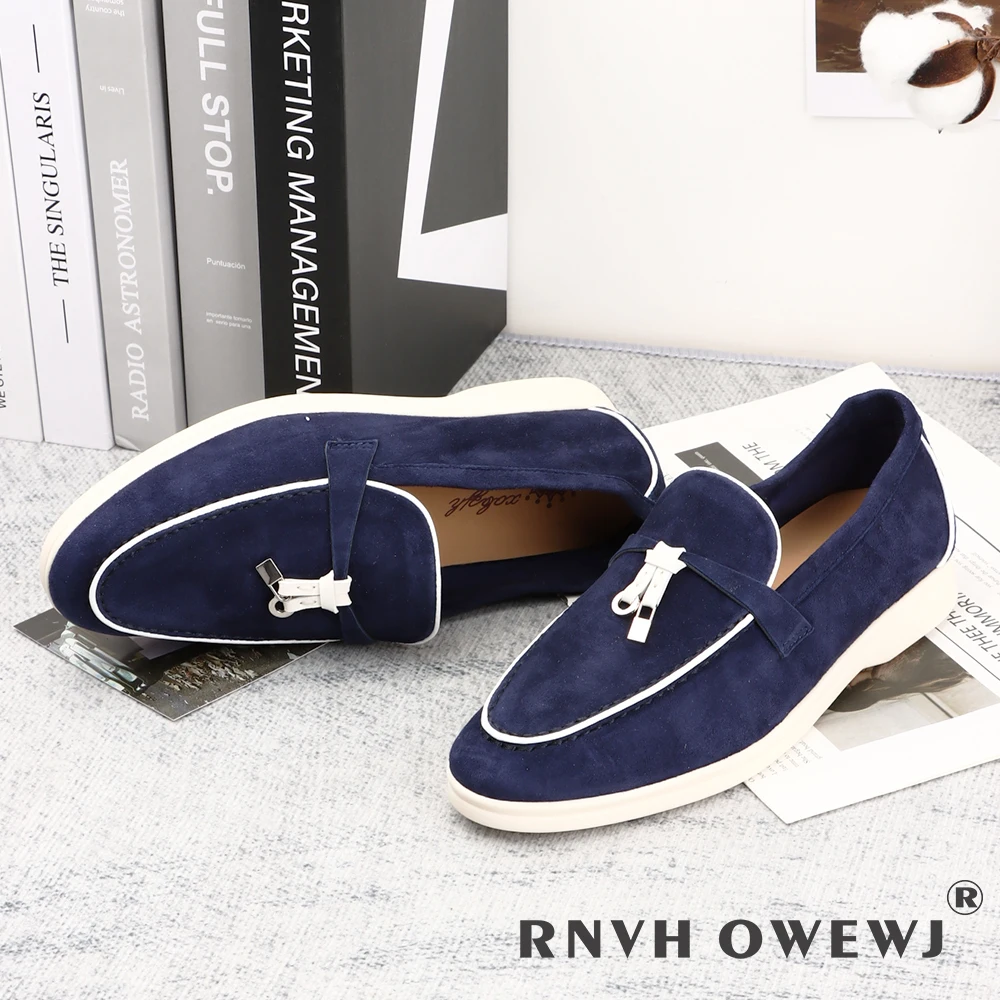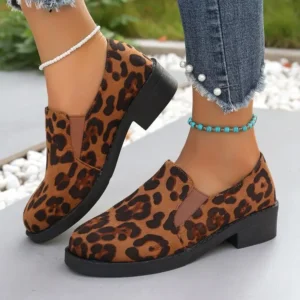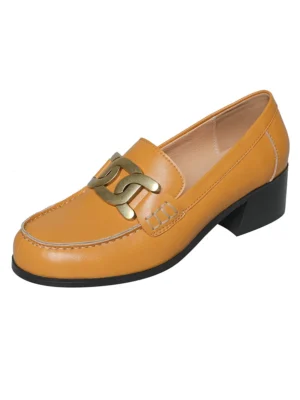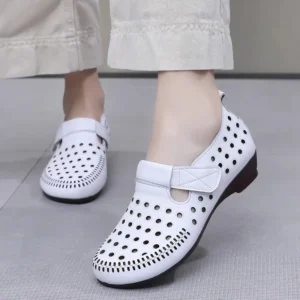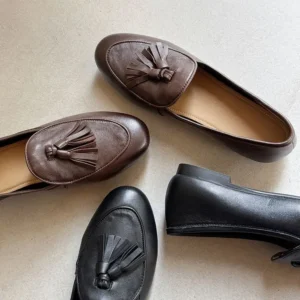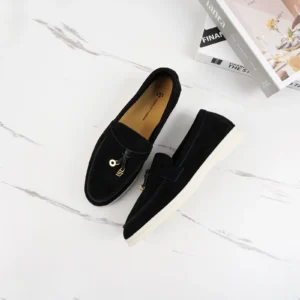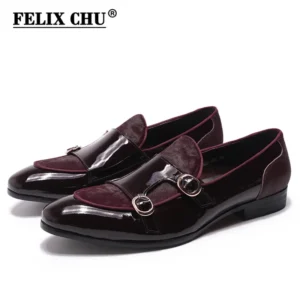Suede loafers represent a beautiful investment in your wardrobe, combining elegance with versatility. However, their luxurious texture comes with a significant vulnerability – sensitivity to water and moisture. At Artisan Haul, we understand how frustrating it can be when your favorite suede loafers fall victim to water damage. That’s why we’ve created this comprehensive guide to help you protect your cherished footwear and extend its lifespan.
Understanding Suede Vulnerability: Why Water is the Enemy
Suede possesses a unique beauty thanks to its distinctive characteristics that set it apart from regular leather. Unlike smooth leather, suede features a napped surface created by buffing the underside of animal hide to create a soft, velvety texture with open pores. This structure is what gives suede its luxurious feel and appearance.
However, this same structure makes suede exceptionally vulnerable to moisture:
- Absorbent nature: The open pores and fuzzy surface of suede quickly absorb water rather than repelling it
- Visible damage: Water causes noticeable ring stains, darkening, and permanent discoloration
- Structural weakening: Repeated water exposure breaks down the protein fibers, leading to stiffness and cracking
- Nap destruction: Water exposure flattens and mats the napped texture, destroying the velvety appearance
Loafers specifically face heightened vulnerability compared to other footwear types. Their low-profile construction means they’re more likely to encounter puddles, morning dew, and unexpected splashes. Additionally, the absence of laces creates more seams where water can penetrate.
Understanding the leather vs suede loafer care differences is essential, as traditional leather treatments can damage suede’s delicate surface. Prevention is vastly more effective than attempting to restore water-damaged suede, as once the fibers are compromised, achieving complete restoration becomes nearly impossible.
For those considering a purchase, our collection of women’s suede flat loafers offers beautiful options that deserve proper protective care from the start.
Essential Preparation: Getting Your Suede Loafers Ready for Waterproofing
Before applying any waterproofing product, proper preparation is crucial. This groundwork ensures the protective coating adheres effectively and distributes evenly across your suede loafers.
Preparation Checklist:
- Clean, dry surface: Waterproofing products can seal in dirt and stains if applied to unclean suede
- Suede brush: A proper brush with brass or rubber bristles designed specifically for suede
- Suede eraser: For spot cleaning and stain removal before treatment
- Clean, dry environment: A well-ventilated area away from direct heat sources
- Newspaper or paper towels: To stuff loafers and maintain shape during treatment
Step-by-Step Cleaning Process:
Dry brush thoroughly: Using your suede brush, gently brush the entire surface in one direction to remove surface dirt and raise the nap. For stubborn dirt, a gentle back-and-forth motion can help.
Spot clean as needed: For any small stains, use a suede eraser with light pressure, rubbing the affected area until the stain lifts. Brush afterward to restore the nap.
Address scuffs: For minor scuffs, use the brush to raise the fibers and restore texture.
Allow to fully dry: Ensure your loafers are completely dry before proceeding. Even slight dampness can compromise the waterproofing effectiveness.
This preparation process follows the foundations of our comprehensive care guide for suede loafers which emphasizes that preparation is as important as the waterproofing itself.
Selecting the Right Waterproofing Product for Suede Loafers
Not all waterproofing products are created equal, especially when it comes to delicate suede. The right product creates an invisible barrier that repels moisture while preserving suede’s texture and appearance.
How Waterproofing Sprays Work
Waterproofing sprays create a microscopic protective film over suede fibers. This hydrophobic barrier causes water to bead up and roll off rather than being absorbed into the material. The best sprays accomplish this without compromising breathability or altering the suede’s appearance.
Key Qualities to Look For:
- Specifically formulated for suede: Products designed for suede will protect without damaging the delicate nap
- Invisible protection: Should dry clear without discoloration or residue
- Breathability: Must allow air circulation to prevent odor and maintain foot comfort
- Non-darkening formula: Especially important for light-colored suede
- Water and stain repellency: Should protect against both water and oil-based stains
Product Types Comparison:
Silicone-Based Sprays
* Pros: Strong water repellency, durable protection
* Cons: Can darken some suede, may affect breathability if overapplied
* Best for: Darker suede loafers in very wet climates
Fluoropolymer/Acrylic-Based Sprays
* Pros: Clear, invisible finish, maintains breathability
* Cons: May require more frequent reapplication
* Best for: Light-colored suede and delicate finishes
Natural Wax-Based Products
* Pros: Environmentally friendly, adds conditioning benefits
* Cons: May slightly darken suede, requires careful application
* Best for: Vintage suede that needs both protection and conditioning
Selection Factors to Consider:
- Climate exposure: Choose more robust protection for wet conditions
- Wear frequency: High-wear loafers need more durable protection
- Suede color: Lighter colors require non-yellowing, completely clear formulations
- Suede quality: Premium suede deserves premium protection
For specific product recommendations and detailed reviews, our guide to the best products for loafer care offers expert insights on which waterproofing solutions perform best for different types of suede.
Our collection of women’s suede penny loafers showcases styles that maintain their beauty for years when properly protected with the right products.
Professional Application Technique: Applying Waterproofing Spray Correctly
Even the best waterproofing product will underperform if applied incorrectly. Follow these precise steps for professional-level results:
Preparation and Safety
Choose your workspace: Select a well-ventilated area, ideally outdoors or near an open window. Place newspaper beneath loafers to protect surfaces.
Safety first: Waterproofing sprays contain chemicals that shouldn’t be inhaled. Consider wearing a mask and ensure good airflow.
Test first: Apply a small amount to an inconspicuous area (like the inner heel) to check for any adverse reactions or color changes.
Application Process
Shake thoroughly: Most sprays require vigorous shaking for 1-2 minutes to properly mix the active ingredients.
Maintain proper distance: Hold the can 6-8 inches (15-20 cm) away from the suede surface. Too close can saturate and damage the suede; too far results in uneven coverage.
Use light, even passes: Apply with smooth, sweeping motions rather than focusing on one area. This prevents oversaturation and ensures consistent coverage.
Cover systematically: Start with the toe box, then sides, then heel, finally addressing the tongue and inner areas. Pay special attention to seams and connection points where water often penetrates first.
Initial drying: Allow 15-20 minutes for the first coat to begin drying. The suede should feel dry to a light touch but not completely cured.
Second Coat Application
For maximum protection, a second coat is essential:
Apply perpendicular to first coat: If your first application moved horizontally across the shoe, apply the second in vertical strokes for complete coverage.
Focus on high-exposure areas: Give extra attention to the toe box and areas that contact the ground most frequently.
Complete drying: Allow at least 24 hours of drying time in a well-ventilated area away from direct heat or sunlight. Patience here is crucial for optimal protection.
The techniques outlined in our complete guide to leather and suede care provide additional context on how these application methods support long-term footwear health.
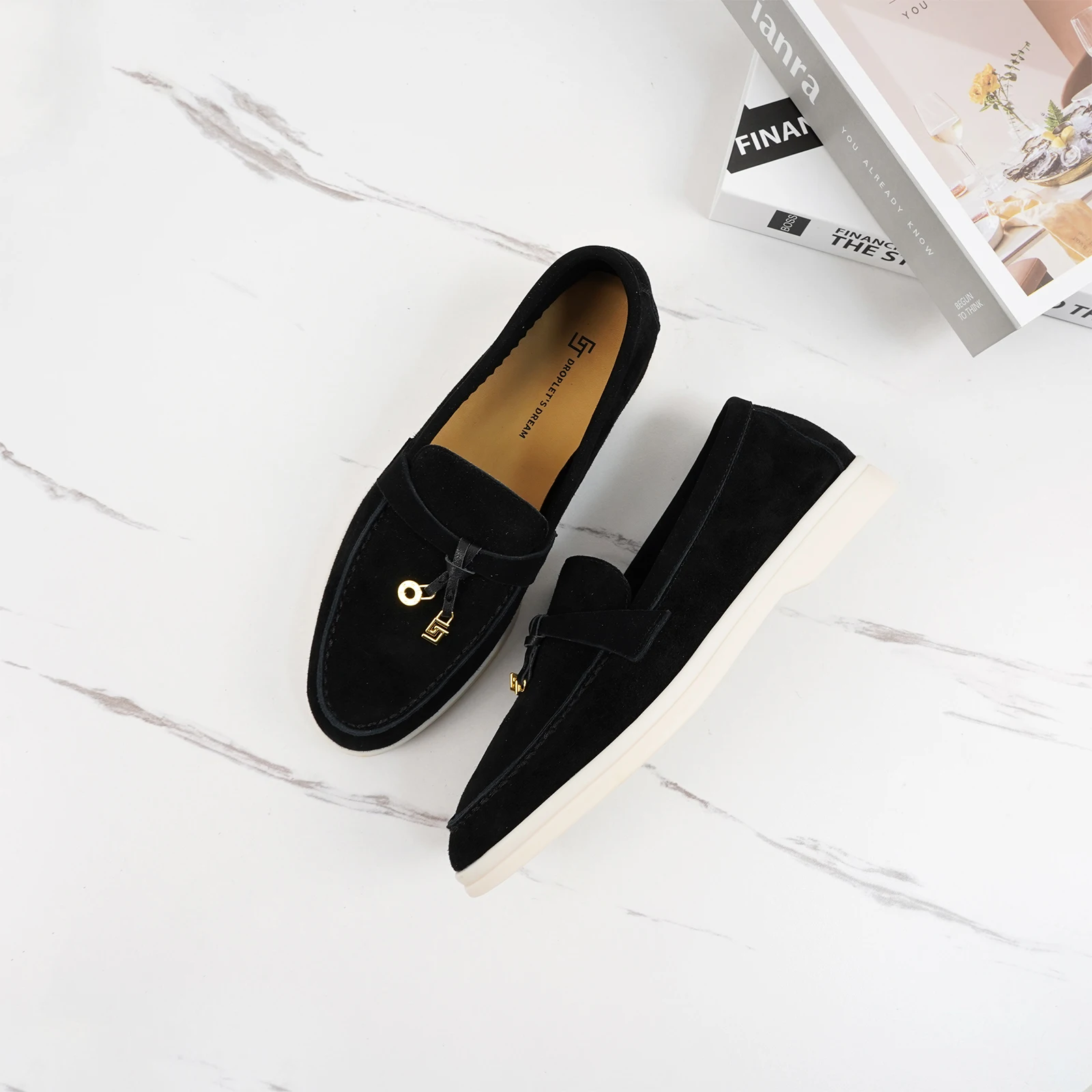
Comprehensive Maintenance: Preserving Water Protection Long-Term
Waterproofing isn’t a one-time solution but rather an ongoing commitment to your suede loafers. Establishing a consistent maintenance routine ensures your protection lasts and your loafers remain beautiful.
Maintenance Schedule
- Daily/After Each Wear: Quick brush with a suede brush to remove surface dirt and restore nap
- Weekly: More thorough brushing, especially if worn multiple times
- Monthly: Inspect for thin spots in waterproofing protection
- Every 4-8 Weeks: Reapply waterproofing spray (more frequently in rainy seasons)
- Seasonally: Deep cleaning and comprehensive retreatment
Effective Maintenance Techniques
Proper Brushing: Use a suede brush with natural bristles in gentle, one-direction strokes. This maintains the nap without damaging the waterproofing layer. For most suede loafers, 10-15 strokes per section is sufficient.
Protection Assessment: Test your protection level occasionally by dropping a small water droplet on an inconspicuous area. If it beads properly, your protection is intact. If it begins to absorb, it’s time to reapply.
Seasonal Considerations:
* Winter: Increase protection frequency due to snow, salt, and slush exposure
* Summer: Focus on dust removal and UV protection
* Rainy Seasons: Apply extra waterproofing before predicted wet weather
Storage Practices:
* Store in breathable cotton bags rather than plastic
* Use cedar shoe trees to absorb moisture and maintain shape
* Keep away from direct sunlight which can degrade both suede and waterproofing agents
* Ensure complete dryness before storage to prevent mildew
For more comprehensive guidance on maintaining all types of footwear over years of use, our long-term leather footwear care guide provides valuable insights that complement these waterproofing practices.
The intricate details on our women’s tassel detail loafers require this level of consistent care to preserve both their water resistance and decorative elements.
Emergency Response: Handling Water Exposure on Protected Suede
Even with proper protection, accidents happen. Knowing how to respond quickly to water exposure can mean the difference between a minor inconvenience and permanent damage to your suede loafers.
Immediate Action Steps for Water Exposure
Blot, don’t rub: Immediately blot excess moisture with a clean, absorbent cloth or paper towel. Use gentle pressure and avoid rubbing which can push water deeper into the fibers.
Use proper materials: Microfiber cloths work best as they absorb without leaving residue. Avoid colored cloths that might transfer dye to wet suede.
Shape maintenance: Insert shoe trees or stuff with white paper (not newspaper with ink) to maintain shape while absorbing internal moisture.
Air dry properly: Allow loafers to dry naturally at room temperature away from direct heat sources. Direct heat can cause shrinkage and fiber damage.
Specific Scenario Responses
Light Rain Exposure:
* Blot surface moisture
* Brush gently once dry to restore nap
* Inspect for water penetration spots
Heavy Soaking:
* Remove insoles if possible
* Stuff completely with absorbent paper
* Replace paper as it becomes damp
* Allow 24-48 hours to dry completely
* Apply conditioning treatment once dry
Non-Water Liquid Spills:
* Different liquids require different approaches
* Oil-based spills need absorptive powder (like cornstarch)
* Sugar-based spills need minimal moisture for removal
* Always blot, treat, then allow to dry completely before brushing
Post-Incident Assessment
After your loafers have completely dried, evaluate the effectiveness of your waterproofing:
* Check for water spots or discoloration
* Assess nap consistency
* Test flexibility of the material
* Reapply waterproofing as your first step to preventing future damage
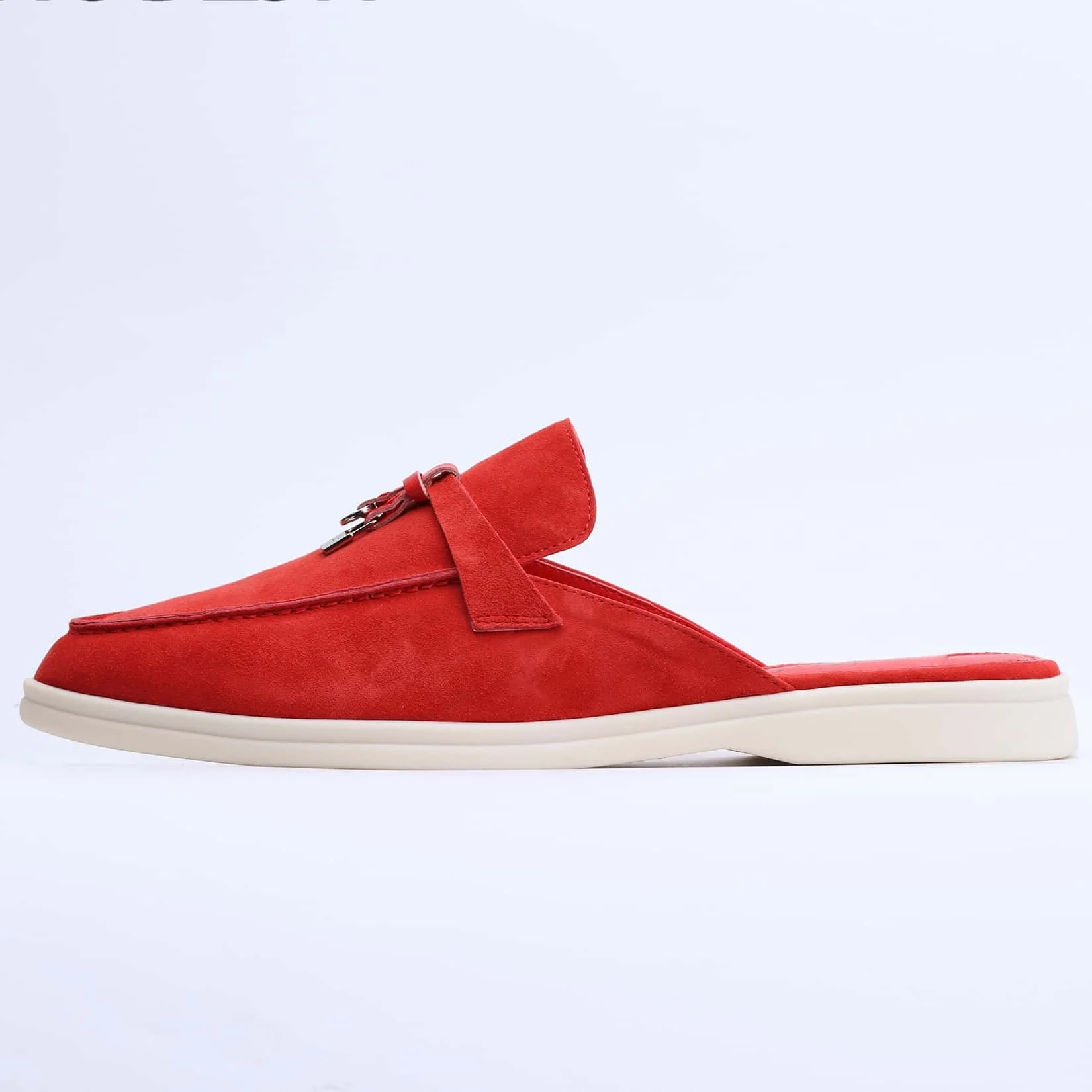
Critical Mistakes: What Never to Do with Suede Loafers
Avoiding these common mistakes is just as important as following proper care procedures. These errors can cause irreparable damage to your suede loafers:
1. Exposing to Excessive Heat
Never place suede loafers near radiators, heaters, or in direct sunlight to dry. Temperatures exceeding 90°F (32°C) can cause the suede to shrink, crack, and become permanently damaged. The gentle fibers that create suede’s soft texture literally cook under high heat, becoming brittle and breaking down.
2. Using Household Cleaners
Common household products like soap, detergent, or all-purpose cleaners contain chemicals that strip suede’s natural oils and destroy its texture. The alkaline nature of many cleaning products breaks down the protein structure of suede. Particularly damaging are:
* Bleach-based cleaners
* Ammonia products
* Acidic cleaners (vinegar)
* Alcohol-based solutions
3. Ignoring Protection Limitations
Even perfectly waterproofed suede has limits. Wearing suede loafers in heavy rain, snow, or for beach walks exceeds what any waterproofing treatment can handle. The protection is designed for light moisture exposure, not submersion or continuous wetness.
4. Improper Storage
Storing suede loafers in plastic bags, airtight containers, or damp environments promotes mildew growth and prevents the material from breathing. Similarly, stacking heavy items on top crushes the nap and creates permanent compression marks.
5. Using Regular Shoe Polish
Standard shoe polish designed for smooth leather will clog suede’s nap and create a sticky, matted surface that’s nearly impossible to restore. The oils and waxes in polish fundamentally change suede’s texture.
Understanding the difference between leather vs suede maintenance helps avoid these common mistakes, particularly for those new to suede footwear.
Our collection of women’s classic tassel loafers represents a significant investment that deserves protection from these common care mistakes.
Advanced Weatherproofing: Beyond Basic Water Protection
For those seeking maximum protection or living in challenging climates, basic waterproofing may not be sufficient. These advanced techniques provide enhanced protection for your suede loafers:
Enhanced Edge Protection
The seams and edges of suede loafers are particularly vulnerable to water penetration. Apply a small amount of beeswax or specialized edge sealer to create an additional barrier along:
* Sole-to-upper connections
* Visible seams and stitching
* Heel counter edges
* Toe box perimeters
This creates a secondary defense line where water would first penetrate the shoe structure.
Seasonal Protection Strategies
Winter Protection:
* Double coating of waterproofing spray
* Additional attention to salt protection products
* Consider specialized winter-formula protectants with anti-freezing properties
Summer Protection:
* UV-protective sprays to prevent color fading
* Lighter formula protectants that enhance breathability
* Dust-resistant treatments for dry conditions
Professional Waterproofing Services
For valuable or delicate suede loafers, professional waterproofing offers advantages:
* Commercial-grade protectants not available to consumers
* Consistent application using specialized equipment
* Heat-setting techniques that improve bonding
* Custom color-matching for any touchup needs
Breathability Considerations
Advanced protection shouldn’t compromise foot health. Look for modern nanotechnology-based protectants that:
* Create microscopic protection barriers around individual fibers
* Allow air molecules to pass while blocking larger water molecules
* Include antimicrobial properties to prevent odor development
* Provide protection without a heavy coating
For professional-level advice on balancing protection with material health, our definitive guide to professional loafers offers insights from footwear experts.
Women's Comfortable Flat Loafers, Women's Leopard Print Loafers, Women's Low Heel Loafers
$82.50 Select options This product has multiple variants. The options may be chosen on the product pageWomen's Block Heel Loafers, Women's Heeled Penny Loafers, Women's Monk Strap Loafers
$194.04 Select options This product has multiple variants. The options may be chosen on the product pageWomen's Comfortable Flat Loafers, Women's Leather Flat Loafers, Women's Round Toe Flat Loafers
$124.88 Select options This product has multiple variants. The options may be chosen on the product pageWomen's Black Flat Loafers, Women's Black Penny Loafers, Women's Classic Tassel Loafers
$194.28 Select options This product has multiple variants. The options may be chosen on the product pageWomen's Loafer Mules, Women's Suede Flat Loafers
$190.23 Select options This product has multiple variants. The options may be chosen on the product page
Troubleshooting Guide: Resolving Common Suede Protection Issues
Even with careful application, you might encounter issues with your suede protection. Here are solutions to the most common problems:
Discoloration After Waterproofing
Problem: Suede appears darker or has an uneven tone after applying waterproofing spray.
Solution:
* Allow complete drying (at least 48 hours) as some darkening is temporary
* For persistent darkening, brush vigorously with a suede brush to restore nap and distribute product
* For severe cases, use a specialized suede brightener product, followed by gentle brushing
Uneven Protection or Water Breakthrough
Problem: Some areas repel water while others still absorb moisture.
Solution:
* Ensure thorough cleaning before next application
* Apply thinner, more numerous coats rather than one heavy coat
* Use a crosshatch pattern (horizontal then vertical passes)
* Pay special attention to highly porous areas like seams and perforations
Stiffness After Waterproofing
Problem: Suede feels rigid or less supple after treatment.
Solution:
* Gently flex the loafers in your hands to restore flexibility
* Use a suede brush to restore nap and loosen fibers
* For severe stiffness, stuff with paper and leave overnight to help reshape
Removing Excess Waterproofing Product
Problem: Over-application has left a visible residue or shiny spots.
Solution:
* For fresh over-application, blot excess immediately with a clean cloth
* For dried residue, gentle brushing with a suede brush may remove surface buildup
* In extreme cases, a light cleaning with specialized suede cleaner followed by reapplication
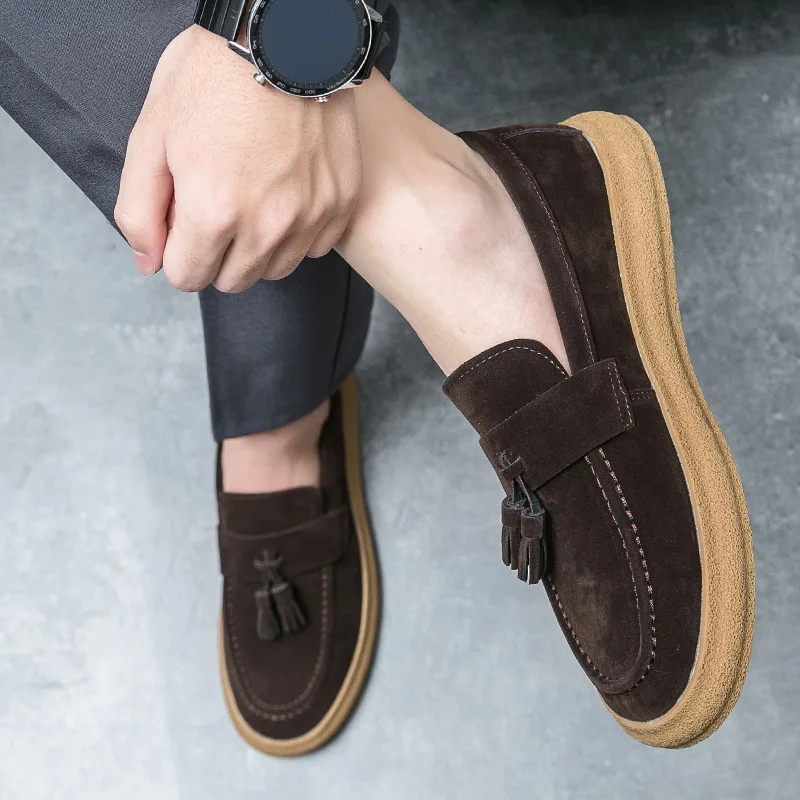
Understanding whether suede leather is easier to care for compared to other materials helps put these troubleshooting tips in context.
Expert Insights: Professional Recommendations for Premium Suede Care
Professional footwear specialists emphasize that proper waterproofing is an essential component of a comprehensive care strategy for high-quality suede loafers.
Long-term Investment Perspective
“Protecting suede loafers from water damage isn’t just about preventing immediate stains—it’s about preserving the structural integrity of fine materials for years to come. A few minutes of preventative care saves hours of restoration work, which often cannot fully restore damaged suede.”
Key expert recommendations:
- Invest in quality protection products initially rather than addressing damage later
- Consider the total cost of ownership (protection products are a fraction of replacement costs)
- View waterproofing as essential maintenance rather than an optional treatment
Integration with Complete Care Routine
Waterproofing should be synchronized with other care practices:
- Rotate between at least two pairs of loafers to allow 24-48 hour rest periods
- Schedule waterproofing applications after cleaning cycles
- Coordinate seasonal treatments with storage transitions
- Document your treatment dates to maintain consistent protection
When to Seek Professional Help
Experts suggest consulting professional shoe care services when:
- Dealing with vintage or extremely valuable suede loafers
- Addressing failed waterproofing that has led to damage
- Treating unusual suede types (extremely soft or highly textured)
- Handling exotic or specialty-dyed suede that may react unpredictably
Our collection of women’s leather flat loafers benefits from many of these same protective principles, adapted for smooth leather surfaces.
FAQ: Quick Answers to Common Questions About Suede Waterproofing
Q: Can waterproofing sprays change my suede’s color or texture?
A: Quality waterproofing products should not noticeably change color or texture when properly applied. Always test on an inconspicuous area first, and ensure you’re using a product specifically formulated for suede.
Q: How long does suede waterproofing last?
A: Waterproofing typically lasts 3-8 weeks depending on wear frequency, weather conditions, and product quality. High-traffic areas like the toe box may need more frequent reapplication.
Q: Can I waterproof suede that’s already been water damaged?
A: Yes, but clean and restore the suede first. Waterproofing damaged suede without preparation will seal in the damage. Results may vary depending on the extent of previous water exposure.
Q: Is professional waterproofing worth the cost?
A: For everyday suede loafers, DIY products are usually sufficient. However, for valuable or delicate suede, professional treatment offers superior protection and may be worth the investment.
Q: Can I wear waterproofed suede loafers in rain?
A: Waterproofing provides protection against light moisture and brief exposure to rain. However, even well-protected suede should not be worn in heavy or prolonged rain, as no waterproofing is 100% impervious to sustained water exposure.
By following this comprehensive guide, you’ll be able to protect your suede loafers effectively, maintaining their beauty and extending their life significantly. Remember that consistent care yields the best results, keeping your footwear looking pristine season after season.

